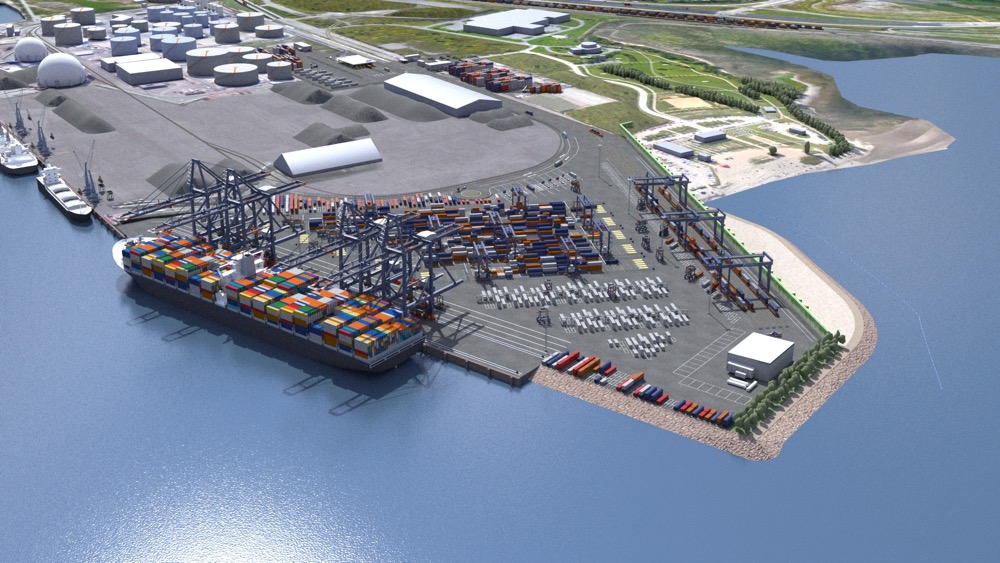The Port of Québec has submitted its follow-up brief to the interim report issued by the Impact Assessment Agency of Canada. The Port’s position is that the brief, which is based on the most current and complete scientific data available, demonstrates that the Laurentia project is safe for human health and environmentally responsible and will shape the economic development of Eastern Quebec and the province as a whole.
“We believe that our brief, produced with the assistance of known experts, effectively and comprehensively addresses the key issues raised in the Impact Assessment Agency of Canada’s interim report,” said Port of Québec President and CEO Mario Girard.
“Our position is based on sound research, modern science, and hard data. Over the past eight years, the Port has done a considerable amount of work assessing the Laurentia project’s potential impacts on the environment and the community.
Certain conclusions can be drawn from these efforts: The project will have a negligible impact on air quality for the residents of surrounding neighbourhoods, including La Cité-Limoilou, and consequently no impact on human health. Impacts on fish and fish habitat will be limited and can be offset. Overall, the commissioning of Laurentia will cut greenhouse gas emissions by nearly 20% (for the same container volume). For these reasons, we are confident that the future Laurentia terminal is a project of benefit to our region and to Quebec as a whole, from the social, environmental, and economic standpoints,” said Mr. Girard.
On the issue of air quality, expert reports conclude that the Laurentia project will generate a negligible quantity of fine particles (PM2.5), in concentrations too low to degrade the air quality in La Cité-Limoilou and adjacent neighbourhoods. According to a 2019 Public Health Department study, the current air quality issues in Limoilou are the result of transportation, industrial activities, and winter wood burning. Port operations have only a marginal impact on the presence of fine particles in the area, as will be the case for the future terminal.
During peak construction periods, or a total of six to ten days a year, the Beauport Bay recreational sector is the only area that could potentially be affected by particulate matter levels above permissible limits. However, these situations could be avoided through strict control measures. The Port will have continuous measurement systems in place to detect and prevent emissions that could exceed daily standards. Operations would be reassessed accordingly, up to and including temporary shutdowns.
“The air quality problems in Limoilou call for concerted action by all stakeholders. The Port of Québec is prepared to play a proactive role in implementing solutions, notably through the CICEL Committee (Comité intersectoriel sur la contamination environnementale dans l’arrondissement La Cité-Limoilou). According to the 2019 Public Health Department study, air quality in Limoilou has improved over the past 10 years. This should encourage us to roll up our sleeves and work together so we can make further progress,” said Mr. Girard.
More broadly, the Laurentia project will have a tangible positive net impact on greenhouse gas (GHG) emissions. The decrease in GHGs generated by Laurentia will come mainly from more extensive use of large ships and trains rather than trucks, as well as an overall decrease in distance travelled across the supply chain. The combined effect will be an 18.5% decrease in greenhouse gas emissions overall. After only four months of operation, this will fully offset the GHGs emitted during terminal construction.
“Remember—the Laurentia terminal will be equipped with ultramodern equipment powered entirely by electricity and hybrid technologies,” said Mr. Girard. “It will be the greenest terminal in North America. And because it will rely mainly on rail to transport goods by land, once the new terminal reaches full capacity in or around 2035, only 90 trucks will be moving in and out per day, compared to an average of 1,100 trucks per day at comparable terminals in North America.”
Mr. Girard also pointed out that the Laurentia project was developed in close collaboration with the community to ensure that the concerns and expectations of local groups and organizations were addressed. “We attend 200 or more community meetings every year to share ideas and talk to people. In addition to the Community Relations Committee, which includes 17 groups and organizations, the Port is involved in some 15 other outside committees and working groups so that Port management can hear the community’s concerns, expectations, and suggestions. As a direct result of these conversations, substantial improvements and changes were made to the Laurentia project to mitigate the negative impacts on the community and augment the positive ones,” added Mr. Girard.
One such mitigation measure is that the Port agreed to work with local authorities on developing a bypass route to the main highway system for trucks going to and from the Laurentia terminal (and other sites in the Port area), to keep them off neighbouring streets and Boulevard Henri-Bourassa.
In addition, based on three Public Health Department recommendations on improving air quality in La Cité-Limoilou, the Port is working on a massive project to add four hectares of green space. The details of the project, which will include development of an urban park, will be unveiled at a later date. The Port also intends to continue working with the Beauport Bay Forum (Forum des usagers de la Baie de Beauport) to redesign and redevelop its recreational areas.
Port management is also pleased to note that support for the Laurentia project remains high among residents in and around Québec City. A poll conducted by the Léger firm from December 4 to 8, 2020, found that 62% of those who have an opinion on the Laurentia project are in favour. (Illustration from Port of Quebec)





